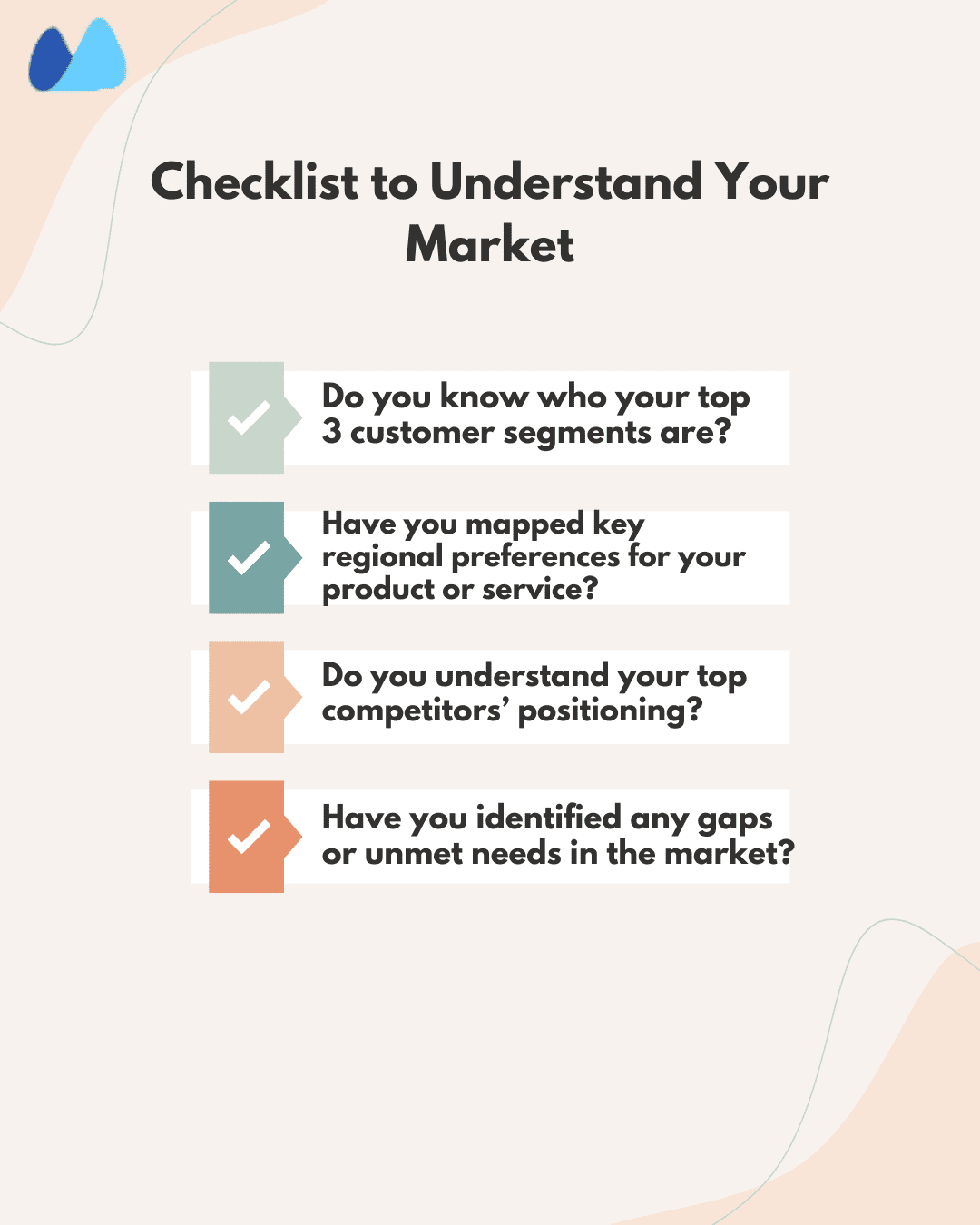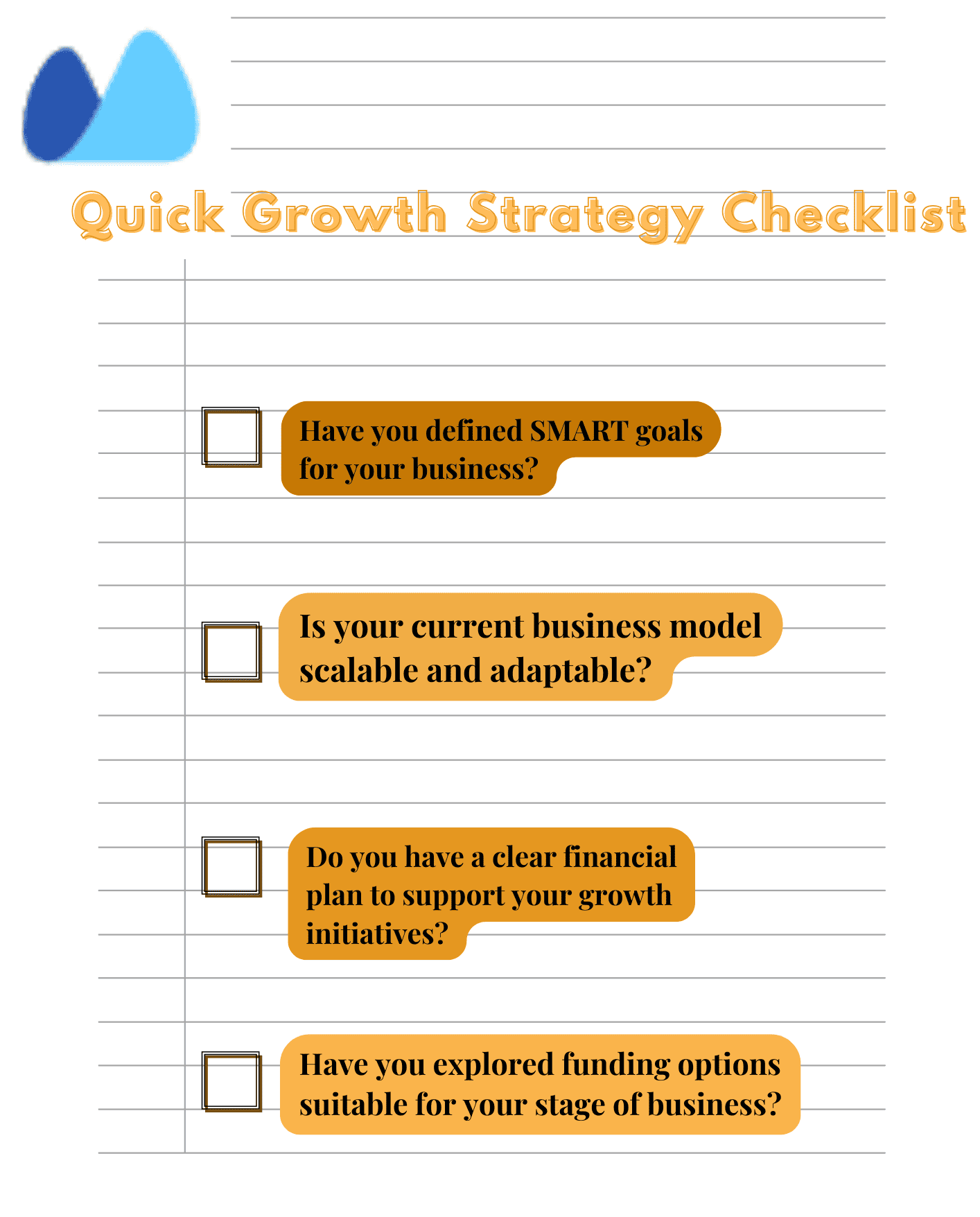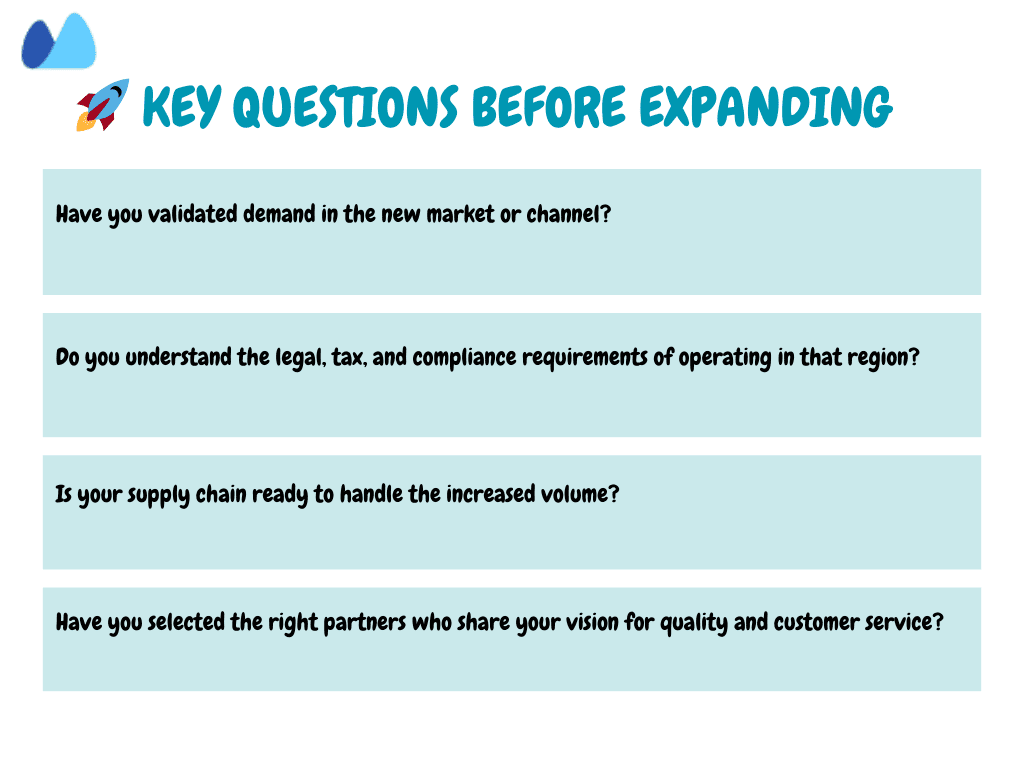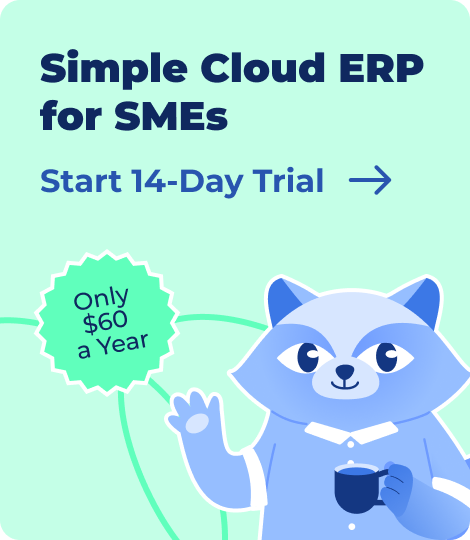Every business owner begins with the same goal: to grow, not just to survive but to expand and scale their business.
In India, you have many opportunities to grow, but they come with intense competition. A vast, diverse market where customer preferences change according to regions. A landscape where governments are initiating digital tools like Digital India, Startup India, and Make in India to help entrepreneurs grow at every level.
Adding to this momentum, the National Statistical Office (NSO) projects India’s real GDP to grow by 6.5% in FY 2024-25, driven by strong domestic consumption and government spending. This steady economy creates a fertile ground for businesses ready to scale.
But for many, the question remains the same: What are the proven steps to grow my business in India? This guide will help you create a practical roadmap to lead your business into growth, whether it’s online or offline. So, if your next step is to scale your business in India, here is how to do it right.
- Understand the Indian Market
- Develop a Business Growth Strategy
- How to Expand Business in India
- Steps to Build Effective Partnerships or Franchise Models
- How to Expand Business Online
- Examples of Successful Expansion Strategies in India
- Leverage Technology and Tools
- Business Improvement Ideas to Accelerate Growth
- Monitor and Adapt
- Conclusion
- FAQs on How To Grow Business in India
- List of Resources
Understand the Indian Market
The first step is to understand where and who your market is. It’s because India is not a single, uniform market. It is a complex, diverse mix of cultures, languages, and preferences. For example, what works in Bangalore might not work the same way in Delhi. A strategy that connects with millennials may completely miss the mark with small-town consumers.
In fact, according to the Indian Brand Equity Foundation (IBEF), India is set to become the second-largest consumer economy by 2030, driven by rising incomes and increasing consumer demand across different sectors.
Identify Your Target Audience and Regional Preferences
- Define your Ideal Customer: You have to start by creating clear customer profiles. Who are you trying to reach, such as urban professionals, rural consumers, small business owners, or Gen Z shoppers?
- Regional differences: India has 22 official languages with thousands of different dialects. So, you should be aware of the cultural factors, purchasing behavior, and price sensitivity, as they will vary depending on the region.
- Use of Data and Insights: Leverage tools like Google Trends, Instagram, Facebook Audience Insights, and local market surveys to understand actual demand patterns and consumer behavior.
✅ Tip: Language localization and regional campaigns can help increase customer engagement, especially when you target Tier 2 and Tier 3 cities.
Research Competition and Market Gaps
- Compare Competitor Analysis: Research your competitors’ businesses to identify what they offer, and assess their strengths and weaknesses. It will help you understand and grow your business.
- Identifying Market Gaps: Check for underserved regions, missing product categories, or service pain points where you can offer a better solution compared to other businesses.
- Use of Market Research Tools: There are several market research platforms, such as Statista, Business Research Insights, and Mordor Intelligence, that provide valuable data on consumer trends, Industry reports, and market forecasts.

Develop a Business Growth Strategy
When you don’t get direction in growth, it often leads to missed opportunities and wasted effort. If you want to scale your business successfully in India, you need a proper, structured plan that aligns with your business goals and market realities.
1. Set SMART Goals (Specific, Measurable, Achievable, Relevant, Time-bound)
Setting growth goals that are too broad, such as increasing sales or expanding the business, often leads to scattered efforts and poor results. The SMART framework forces clarity and accountability.
| Business Type | Example of SMART Goal |
Retail stores |
Open three outlets at least in Tier 2 cities within 18 months |
Increase your website sales by 40% over the next 8 months through SEO and marketing strategies |
|
B2B services |
Try to get as many corporate clients in the manufacturing sector within the next 3 quarters |
Franchise model |
Try to expand your franchise in as many cities as possible within the next three quarters |

2. Build a Scalable Business Model
You have to be careful when building a business model because, for instance, if you create a business model for five customers, it will collapse when you face 500 more. Scalability means your business can grow without a proportional increase in cost or operational stress.
Steps to build for scale:
- You can diversify your revenue streams by adding complementary products or services. For example, a retail clothing brand can introduce accessories or a membership program.
- You can systematize operations to create a Standard Operating Procedure for critical tasks like customer service and inventory management.
- You can leverage your technology by automating your tasks through CRM, accounting software, and ERPs.
- You can optimize the supply chain to make sure your suppliers, logistic partners, and production units can handle the increase in volume.
💡 Example: Many small food brands in India start locally but gradually become successful by adopting the D2C model, using platforms like Shopify or WooCommerce, and combining them with online marketplaces like Amazon and Flipkart to reach a wider audience.
3. Analyze the Financial Requirements for Growth
Scaling your business means requiring capital, but it is not about how much you need. It’s about knowing when you need it and where to deploy it.
Key aspects where growth requires funding:
- You will require marketing and customer acquisition, such as ads, promotions, influencers, partnerships, and SEO campaigns.
- You will require while hiring skilled employees by providing them with training and outsourcing.
- You will require technology investments such as integrating CRMs, ERPs, payment gateways, etc.
- You will require infrastructure and inventory for your warehousing, production capacity, and new locations.
Funding options for Indian business
| Funding Type | Description | Suitable For |
MUDRA Loans |
Collateral-free loans for SMEs |
Local retailers and service businesses |
Incentives for new and growing ventures |
Startups and MSMEs |
|
Angel Investors and Venture Capital |
Equity-based funding in exchange for ownership |
Scalable startups, high-growth businesses |
Raising small amounts from many people online |
Product launches and creative ventures |
🚨 Note: Avoid relying too heavily on any single funding source. Diversify wherever possible and always maintain a healthy cash flow buffer.
4. Evaluate Risks and Prepare for Challenges
A sound growth strategy also accounts for what could go wrong and plans for it. Common growth risks to watch for:
- You should not overextend resources without proper infrastructure
- You should not misread the customer’s demand or enter unsuitable markets
- You should not scale too quickly without financial stability
- You should not ignore regulatory requirements or compliance issues.
✅ Tip: Conduct periodic risk assessments and scenario planning
How to Expand Business in India
Once your growth strategy is in place, the next step is to execute it. You need to decide where and how to expand. Whether you’re looking for geographic growth, entering new sectors, or building distribution networks, the approach should be strategic, not opportunistic.
1. Geographic Expansion
Let’s check the key steps for geographic growth:
- Market Feasibility Study: You try to research consumer demand, competition, purchasing power, and regulatory environment in your target regions.
- Pilot Launch: Instead of scaling for multiple cities, you can start a pilot project in one or two new regions. Test your product acceptance, logistics, and pricing.
- Localize Your Offering: You can adjust packaging, marketing messages, language, and service features to fit local preferences.
2. Expand through B2B Distribution Channels
For many businesses in India, especially manufacturers, wholesalers, and product-based companies, B2B is a powerful way to scale their business without dealing with consumers directly.
Find the right distribution partners or platforms, such as IndiaMart, TradeIndia, and Justdial. You will have access to broaden your business, including getting verified suppliers, dealers, and even distributors. These platforms make it easier for businesses.
How to approach B2B expansion:
- Identify Potential Distributors or Dealers: You can check for partners who have established networks in your target regions
- Attend Trade Shows and Industry Events: You can attend events like India Trade Promotion Organisation (ITPO) expos, regional business fairs, and B2B networking platforms, which will help you find reliable partners
- Negotiate Clear Terms: You can define pricing, territories, credit policies, and performance expectations through formal agreements
✅ Tip: Focus on building relationships. A successful B2B expansion in India often relies on trust and long-term partnerships, not just your contacts.
3. Grow Through Local Partnerships and Franchises
If you have a retail, educational, fitness, food, or beverage business, it’s easy to franchise and form local partnerships. It also offers faster expansion with shared investment risks.
Steps to Build Effective Partnerships or Franchise Models
- You must clearly define your franchise model, which includes brand usage guidelines, operational standards, training, and support structures.
- You should carefully screen potential partners and evaluate your financial capability, and align with your brand values.
- You should support your partners for success and provide ongoing marketing assistance, operational training, and performance monitoring.
💼 Example: Many regional restaurants in India have successfully scaled through a mix of company-owned and franchised outlets, ensuring faster market presence with lower direct capital expenditure.

How to Expand Business Online
While offline expansion helps tap into regional markets, online growth opens up opportunities on a global scale. It is essential in India to expand your business online. There are millions of buyers searching, browsing, and shopping online every day. The digital landscape provides a level playing field for businesses of all sizes.
The e-commerce opportunity in India is not just growing, it is booming. According to Statista, India’s e-commerce market revenue reached $67.16 billion in 2025, with a compound annual growth rate (CAGR) of 10.06% from 2024 to 2028.
Here is how to build your online presence strategically.
1. Build an SEO-Friendly Website
Your website should be user-friendly because it’s the first impression your business makes. If your website is poorly optimized, you can lose potential customers as well before they even see your product.
Key aspects of the website:
- It should be mobile-friendly and website-friendly. Make sure that it loads faster and has responsive layouts.
- You should have straightforward navigation and product information so that it makes it easy for the users to find the product, services, pricing, and contact details
- You should have relevant keywords, descriptions, meta titles, and related content such as blogs and FAQs
- You should publish your blogs regularly, or videos answering customer questions, or showcasing your expertise
2. Sell on E-commerce Platforms
E-commerce marketplaces like Amazon India, Flipkart, Meesho, and JioMart provide immediate business access to a large customer base, eliminating the need for heavy website development.
How to succeed on these platforms:
- You should optimize product listings by using high-quality images, clear titles, bullet point descriptions, and relevant keywords
- You should leverage sponsored ads by running paid promotions within these platforms to boost visibility
- You should maintain competitive pricing and reliable fulfillment
3. Invest in Digital Marketing
Online visibility will not boom overnight. An innovative digital marketing plan will help your business to stay competitive and visible.
Core digital marketing channels to consider:
- You should build organic traffic through keyword-focused content and backlink strategies
- You should implement Google Ads to target specific search terms and geographical locations for lead generation or direct sales
- You should also partner with an influencer for strong engagement
- You should do email marketing to build and nurture your email list through newsletters, promotions, and customer engagement campaigns
Examples of Successful Expansion Strategies in India
1. How Regional Customization Drives Growth
Many consumer goods companies entering new Indian states have been successful by adapting products and messaging to local preferences. Your goods and products depend on the region, wise. If you master it, it will boost your business. But don’t expect the same for global business. You should tailor your product and communication to fit the cultural and regional context.
2. Why Strong Distribution Networks Matter
Manufacturers in sectors like FMCG, electronics, and home goods frequently scale faster by building solid relationships with local distributors and dealers. Instead of managing every retail outlet themselves, these businesses work with trusted channel partners who already have networks and market knowledge.
For instance, leveraging established B2B networks reduces time to market and helps you navigate local operational challenges more efficiently.
Leverage Technology and Tools
In today’s business landscape, the most essential part of your business is scaling. Technology allows companies to automate, streamline, and optimize processes that would otherwise limit their ability to handle higher demand.
Whether you are managing inventory or engaging with customers, the right tools can minimize human errors, save your time, and offer you real-time insights for better decision-making.
Here is how you can use technology as a growth enabler for your business.
1. Use a CRM System for Customer Management
A Customer Relationship Management system will help you keep track of leads, follow-ups, and customer interactions in a more organized way.
Benefits of using a CRM:
- It manages customer data in one place
- It automates your follow-ups and reminders
- It helps you segment customers based on buying behaviour for targeted marketing
- It enables you to track the entire pipeline and conversion rates
2. Implement ERP for Streamlined Operations
An Enterprise Resource Planning (ERP) system helps your business integrate and manage key processes, such as inventory, procurement, finance, and sales, all in one place. Whether you’re scaling across one region or multiple, the ERP system will ensure your operations stay efficient, coordinated, and transparent.
Recommended ERP Solutions for Indian SMEs and Growing Businesses
| ERP Tool | Best Use For |
Kladana |
Inventory-first ERP solution designed for SMEs. It helps you simplify warehousing, production, and sales |
Tally ERP 9 |
It is best for accounting-focused ERP, GST compliance, invoicing, and financial reporting for SMEs |
SAP Business One |
Best use for MNCs, its key features are manufacturing planning and CRM Integration |
Marg ERP |
It is best for retail, distribution, and pharmacy operations with billing and inventory features |
Odoo |
It is best for customizable solutions across various business functions |
Why Does Kladana Lead this List?
Unlike traditional ERPs built around accounting, Kladana puts inventory, orders, and production at the center. It delivers essential ERP features without the bloat — making it a perfect fit for growing manufacturers, wholesalers, e-commerce businesses, and D2C brands.
🚀 Simplify Your Growth Journey with Kladana
As your business scales, managing stock, purchases, invoices, and operations across multiple channels gets complicated. Kladana keeps you in control with a user-friendly, inventory-first ERP — designed for Indian SMEs ready to grow.
Key features to support your growth:
- 📦 Inventory & Warehousing: Track stock levels, transfers, and warehouse operations in real time
- 📥 Purchase Management: Streamline procurement and vendor management
- 🤝 CRM: Manage customer and supplier relationships in one place
- 🏭 Production Management: Use MRP, schedule production, and connect teams via the Shop Floor App
- 🔄 Online Order App: Start selling online instantly — no website needed
- 🛒 Shopify Integration: Sync inventory and sales data with your e-commerce store
- 🔗Multi-Channel Connections: Centralize operations across marketplaces and business tools
3. Inventory and Order Management System
Whether you manage a retail store, an e-commerce site, or sell on platforms like Amazon and Flipkart, having adequate inventory and order management is essential. Manual tracking often leads to errors, stockouts, or overstocking.
Key features to look for:
- Real-time inventory visibility across multiple sales channels
- Automated order processing and invoicing
- Low stock alerts, restocking reminders
- Warehouse and supplier management
- Integrations with e-commerce platforms, accounting tools, and payment systems
4. Simplify Payments with Secure Gateways and Mobile Commerce
In India, digital payment works almost everywhere. It’s convenient for everyone, whether you’re a customer or a business.
Recommended payment solutions:
- Payment gateways: Razorpay, PayU, CCAvenue, JustPay, etc
- UPI integration: Google Pay, PhonePe, Paytm, BHIM
- Subscription Billing (if applicable): Razorpay subscriptions, Chargebee
5. Use Analytics and Automation Tools
Analytics tools will help you track what works and where improvements are needed.
Key tools to consider:
- Google Analytics will help you track website traffic, user behaviour, and conversions.
- Meta Business Suite will help you monitor ad performance and engagement.
- The Google Ads dashboard will help you measure ROI on paid campaigns
- Marketing automation tools like Mailchimp, Zoho Campaigns, and Hubspot for email automation and lead nurturing
Business Improvement Ideas to Accelerate Growth
Growth is not only about expanding into new markets or adding more products. It’s also about improving how you operate, serving your customers, and positioning your brand.
Here are practical business improvement strategies you can implement to accelerate your growth journey.
1. Strengthen Customer Service and Feedback Loops
No matter how good your product is, poor customer service can stall growth. You can take some action steps that can help you grow your business.
Action steps:
- Implement your regular customer feedback surveys
- Use CRM tools to track service tickets, queries, and response times
- Set up feedback channels across all touchpoints
- Train your employees in customer handling, product knowledge
2. Invest in Branding and Consistent Messaging
Your brand is more than your logo or tagline. It is the experience people associate with your business.
Focus areas:
- You can develop a brand style guide covering your logo, colour palette, fonts, and tone of voice.
- You should maintain consistency across all platforms.
- You should share your brand story and values authentically in your communication.
- You should use high-quality visuals and professional design templates for marketing materials.
3. Introduce Loyalty Programs and Value-Added Services
Customer acquisition costs are rising, but retaining existing customers is more cost-effective and profitable.
Ideas for loyalty and value-add:
- You should provide offer point-based rewards, discounts on repeat purchases, or for new users.
- You should introduce referral incentives to encourage your existing customers to bring in new ones.
- You should provide value-added services like free consultations, extended warranties, or free installation or support.
- You should create exclusive content, guides, or how-to resources that add real value to your customers’ experience.
4. Optimize Internal Processes
Operational bottlenecks can slow growth, increase costs, and negatively impact the customer experience.
Areas to optimize:
- You can automate repetitive tasks like invoicing, inventory updates, or email follow-ups.
- You can standardize workflows through SOPs.
- You can conduct a quarterly review of operations to identify inefficiencies and process gaps.
5. Upskill Your Team
Your team plays a vital role in delivering growth. If you train your employees, they are the ones who help grow the company and are the most productive.
Actionable steps:
- Invest yourself in skill-building workshops on digital tools, customer service, or sales techniques.
- Encourage your employees through brainstorming sessions.
- Recognize and reward your employees.
Monitor and Adapt
A growth strategy is not something you set and forget. The businesses that succeed in the long term are not those that plan well, but those who consistently measure, learn, and adapt.
To ensure your growth, you need to regularly monitor key performance indicators (KPIs), review what’s working, and make timely adjustments.
1. Track Growth KPIs Consistently
Without clear metrics, you are just guessing. Define the right KPIs based on your business model and goals.
Example of growth KPIs
| Area | KPI Examples |
Sales performance |
Monthly revenue growth, average order value, and repeat purchase rate |
Customer acquisition |
Customer Acquisition Cost and Lead Conversion Rate |
Online Presence |
Website traffic, bounce rate, keyword rankings, ad ROI |
Inventory and Fulfillment |
Order fulfillment time, stockout rate, and returns ratio |
Customer Satisfaction |
Net Promoter Score (NPS), customer satisfaction survey results |
2. Review Your Strategy Quarterly
Markets are constantly changing and evolving rapidly, especially in India. Conduct structured reviews every quarter to evaluate:
- Are you meeting your SMART goals?
- Which products, channels, or regions are underperforming or outperforming?
- Where are your marketing spends generating the highest return on investment (ROI)?
- Are there operational bottlenecks slowing down your scale-up?
3. Stay Agile and Responsive to Market Changes
Your adaptability is a key strength in India’s diverse and fast-moving markets. Keep your business agile by:
- Listening to the needs of the customers regularly
- Staying updated and watching competitors’ moves
- Experimenting with new approaches such as small changes in pricing, offer, and marketing tactics
Conclusion
Growing a business in India is not about chasing every opportunity. It’s about choosing the right ones, backed by strategy, data, and adaptability.
From understanding your market to leveraging technology, the core principles remain the same. Growth requires clarity, consistency, and continuous learning.
Start reviewing your strategy outline in this guide as a roadmap, not just for expansion but for building your business that can scale, sustain, and succeed in India’s dynamic environment.
FAQs on How To Grow Business in India
How can I grow my small business in India with limited capital?
Start by focusing on low-cost digital marketing channels, such as search engine optimization (SEO) and social media. You can also leverage government schemes such as MUDRA loans.
What are the best ways to expand a traditional offline business online in India?
- Build a mobile-friendly, SEO optimized website.
- List your products on platforms like Amazon India, Flipkart, Ajio, Meesho, or niche markets.
- Use Google My Business to attract local customers online.
- Start basic digital marketing by focusing on Google Ads, Instagram/Facebook, and content creation.
How do I choose the right e-commerce platform for my business in India?
- Your target audience (B2B, B2c or D2C)
- Product category (handicrafts, FMCG, electronics, etc.)
- Logistics and payment gateway integrations
What government schemes support small business growth in India?
- MUDRA loan
- Start-up India
- SIDBI
- Stand-up India scheme for women and SC/ST entrepreneurs
- Digital MSME scheme for technology adoption
How can I find distributors or B2B partners in India?
- Attend trade fairs, exhibitions, and expos
- List your business on platforms like IndiaMart, TradeIndia, Justdial, etc.
- Use LinkedIn for professional outreach
- Offer partnership incentives and clearly define expectations
What are the key factors to consider before expanding to a new region in India?
- Regional demand and buying behaviour
- Competition analysis
- Pricing sensitivity
- Regulatory and tax requirements
- Logistics and supply chain capabilities
How do I calculate the cost of Customer Acquisition (CAC) in India?
CAAC Total marketing and sales expenses➗ number of new customers acquired over the same period.
What digital marketing strategies work best for business growth in India?
- SEO and Content marketing for organic reach
- Google Ads and YouTube Ads for targeted visibility
- Instagram reels, Facebook Ads, and WhatsApp Business for direct engagement
- Influencer marketing, especially micro influencers with local reach
- Email marketing for retention and upselling
How can I improve my supply chain while scaling my business?
- Use Inventory management systems like Kladana for real-time stock tracking
- Build relationships with multiple suppliers to avoid dependency on one source
- Automate purchase orders and stock alerts
- Partner with reliable logistics and warehousing services
What key performance indicators (KPIs) should I track for business growth in India?
- Revenue growth rate
- Customer Acquisition Cost
- Customer retention rate
- Order fulfillment time
- Website traffic and conversion rate
- Inventory turnover ratio
List of Resources
- Digital India — The Flagship Programme of the Government of India
- Start-Up India — Entrepreneurship Promotion
- Make In India — Global Manufacturing
- PIB — National Statistical Office
- IBEF — Brand Equity Foundation
- MUDRA Loan — Pradhan Mantri MUDRA Yojana (PMMY)
- SIDBI — Registration Portal
- Stand-Up India — Inclusive Entrepreneurship
- Start-Up India Seed Fund — Early Stage Start-up Funding
- Crowdfunding — Collective Small Scale Funding
- Statista — Market Insights of E-commerce India
Read‑alikes
10 Applicable Business Improvement Ideas for Small and Medium-Sized Enterprises
How To Start a Garment Manufacturing Business in India: Costs, Licenses & Expert Insights
How to Improve Sales: 10+ Tips for Small and Medium-Sized Businesses
Top eCommerce Business Ideas and Trends to Fuel Growth in 2025
Wholesale Trends and Business Ideas for 2025: Concrete Strategies for Success
20+ Profitable and Scalable Production Business Ideas for SMEs

